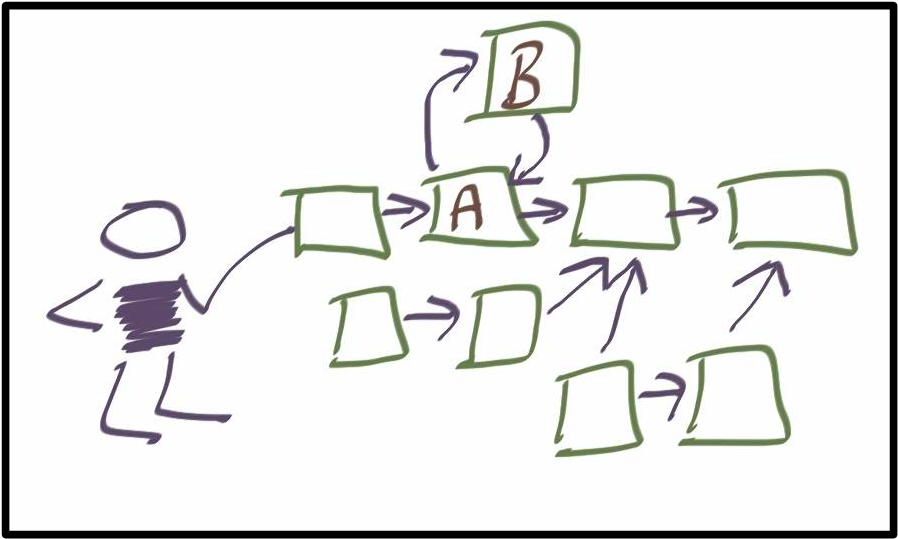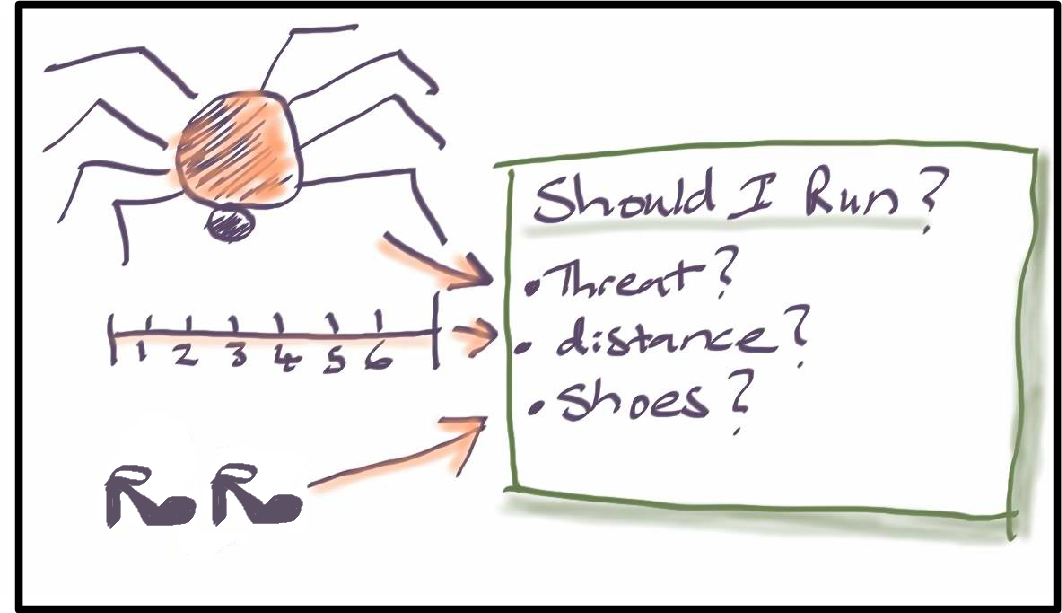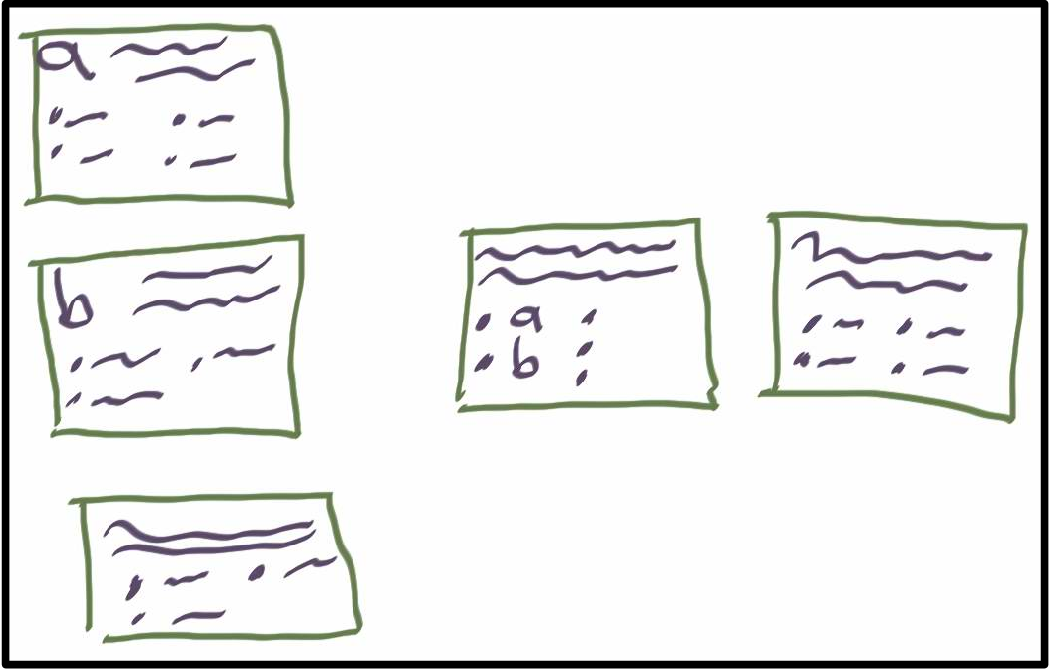Thank you to Torbjörn Gyllebring and Thom Leggett for the conversations and inspiration to write this post.
It can be useful to step back from our work and study the decisions that we are making. Here are some of the ways to study decisions and how we can start to visualise the information.
Start by writing out the decisions and laying them out in a logical sequence – grouping similar ones together and consequential ones after each other. Draw some arrows between them – it can be helpful if another person is working with you to help clarify which decisions lead to others and their inter-relationships.
Sometimes there are loops such as the ones labelled ‘A’ and ‘B’ where, when we make decsion A, it changes how we should make decsion B which then impacts how we should make decision A. It might be possible that we get false ‘loops’ as well as the real ones when we are not clear about the decisions that we are making.
Once a decision has been identified, we start seeking the information required in order to make the decision. It is as if the decision is ‘pulling’ the information into it, and once there is enough, we can then make the decision. We can visualise this by writing the decision as a question on the top of a card and the information items required as bullet points under the question.
Some information items are actually prior decisions, we can use a code to link these cards together and put them up on a wall to show the realtionships. This allows us to have good conversations about both the activities required to gather information and the progress of the decisions that we are making.



